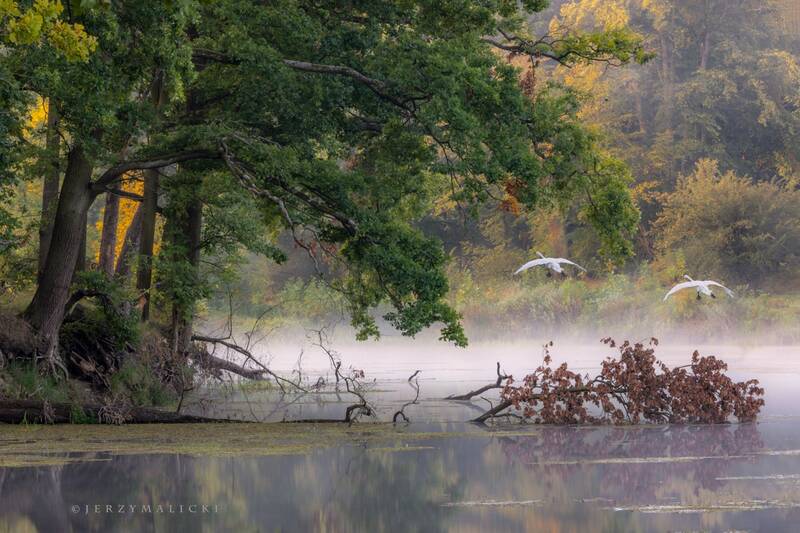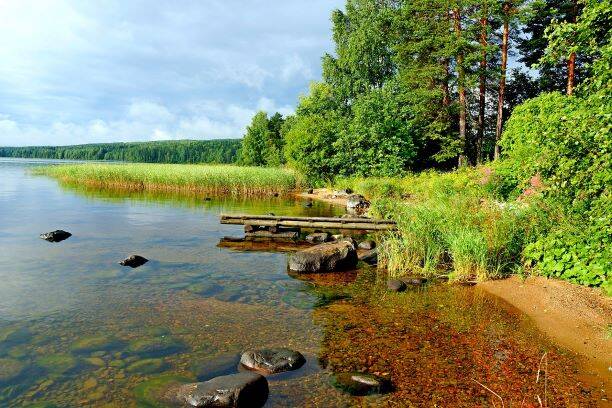Let's save water not just on special occasions.
11 kwietnia 2021 r.
Water Purity Week is a perfect occasion to remind ourselves of the problem of water contamination and encourage people to protect waters. Every one of us can have an impact on the condition and quality of water resources, bearing in mind that the quantity of water is limited. Human activity, having an impact on the level of environmental pollution and climate change result in the fact that our duty is to carry out certain activities for water protection.
Water is the source of life for any living organism. Biggest civilizations have emerged in the neighborhood of waters and have fallen if the water supply has become limited or impossible. Currently, with increasing human population, growing urbanization and economic development, water shortages are a big challenge for the globe.The impact of human activities on the aquatic environment is referred to as anthropogenic pressures. Air pollution, municipal sewage or the remains of artificial fertilizers flowing from the agricultural fields into the water reservoirs, have a negative impact on the condition of surface and ground waters. Polluted rivers, lakes or seas even contribute to the extinction of many plant and animal species around the globe.
Who and what pollutes water the most? What role do ecosystem services play in water purification?
There are many factors contributing to water pollution, but water degradation is mainly due to human activity. The main sources of water pollution are industrial and municipal wastewater, transportation or intensive agriculture. The impurities enter groundwater, leading to a.o to eutrophication. All sectors of the economy, although to varying extent, have an impact on the condition of the waters and their pollution. That is why it is so important to control both operators who use the environment and water resources, as well as regular water status surveys.
Economic development also guarantees better access to modern solutions. They allow for more effective environmental protection, including the protection of waters. The investments within the water and sewerage industry apply new solutions for water purification and sediment management. Modernizing existing systems and investment in individual solutions for the collection and the treatment of domestic waste water lead to a reduction in the amount of pollutants entering the water. Large industrial plants and companies are obliged to use water retention and cleaning solutions before being discharged to target receivers. Apart from technical activities, an important role in combating contamination is played by eco-system services, used more and more frequently to protect waters in agricultural retainers. A part of the biogenes existing in the Baltic Sea originate from agriculture and flow into the sea through a system of river arteries. In order to protect waters, hydrological activities based on nature are undertaken, an example of which is re-creating and constructing the so-called buffer zones. Buffer zones are the points of contact between neighboring ecosystems that separate aquatic ecosystems from agricultural land with a strip of vegetation, helping to reduce the flow of biogenes into the waters. Trees and reed rushes stop contamination originating from agriculture, absorbing organic matter in their tissues and using nitrogen and phosphorus from artificial fertilizers. A glaring example of trees in the agricultural ecosystem that support the water self-purification process are willows. Their well-developed root system limits the biogenes from flowing in the waters, and subsequently - to the sea. Plants are therefore involved in the self-cleaning of waters, improving their quality. With the presence of plants in water and water-dependent ecosystems, plants create abundant ecological corridors often being the hideaway for wild fauna and flora, especially in agricultural and urbanized retainers. We must remember that by caring about water surface plants, we help care about the water's good condition, and any acts of vandalism directed towards the water surface plants should immediately be notified to relevant authorities.

Waterside chokes of the Old Oder River in Nowa Sól. Photo Jerzy Malicki
Who monitors and assesses the condition of waters?
Water protection is a very extensive issue, implemented at different levels of law. In international perspective, with the Framework Water Directive (FWD) enacted by the European Union, all member states have been obliged to realize a common goal - achieving the good condition o water and water-dependent ecosystems. At national level, the provisions of the Directive have been implemented into the Water Law Act.
The Chief Inspectorate for Environmental Protection is responsible for the assessment and monitoring of surface waters as well as the quality monitoring of groundwater, and this task is carried out under the State Environmental Monitoring. On the other hand, the State Hydrogeological Service – The State Geological Institute – is responsible for quantitative monitoring of groundwater. The Chief Inspectorate of Environmental Protection assesses the so-called uniform bodies of water [i], i.e. sections of rivers or other waives, lakes or fragments thereof, transitional and coastal waters and underground. Bodies of water are the basic unit of water management. In turn, the National Water Management Authority (PGW WP) develops draft planning documents, the main purpose of which is to ensure the good status of surface and groundwater in our country. There are plans for water management for water basin territories, updated every 6 years on the basis of e.g. new results of the tests of water condition and their evaluation [ii].
Role of cooperation on water preservation
Water preservation activities is caring about the planning aspects and effective on-site interventions. The National Water Management Authority cooperates closely with environmental authorities, such as the Chief Inspectorate of Environmental Protection and the General Directorate of Environmental Protection both during the preparation of planning documents in water management, as well as on the ground. With the coordinated interventions of these vessels, deliberate human actions deteriorating the state of the waters are increasingly being eliminated.
Have your say on water issues!
Achieving good water status is an objective that requires action by both public and private institutions, production facilities and individual water users. Planning documents - water management plant on water basin territories are the basis for taking the decisions that shape the condition of water resources and management of said resources. These documents also affect other sectors of the m.in, including industry, municipal management, agriculture, forestry, transport, fisheries and tourism.
With public consultations of the second update of the water management plan - II aPGW, each one of us will have an opportunity to influence the final form of the solutions whose aim is to ensure good quality of water resources in Poland. For more information, see: www.apgw.gov.pl. Importantly, for the first time an integral part of the plans will be a set of measures implemented to improve the condition of our waters, which will legally oblige the indicated units to implement them.
The future is in our hands.
At a time of changing climate and limited water resources, it is in everyone's interest to care about the access to clean springs. We take common action in order to protect water resources, to prevent pollution and to prevent excessive exploitation. Starting with simple steps – turning water in the tap while brushing your teeth, using a shower instead of bathing in the bath, by watering homemade flowers with rainwater. Starting from the application of low retention solutions, i.e. building mini ponds or ponds in our gardens, to reducing plastic consumption and not throwing rubbish around or directly into the rivers or lakes. These simple steps are our personal contribution to the future of the planet. Let us not be passive in destroying ecosystems and the waters dependent on them, let us be involved in initiatives to improve their status. Let's take care of water resources not only during Water Purity Week, but all year round.

The vegetation of coastal zone of a lake. Photo Pixabay
--------------------------------------------------------------------------------------------------------------
[i] Body of surface water (jcwp) means a separate and significant element of surface water such as a lake, reservoir, stream, river or canal, part of a stream, river or canal, transitional waters or a strip of coastal waters.
A body of groundwater (jcwpd) means a specific volume of groundwater occurring in the
aquifer or aquifer assembly.
aquifer or aquifer assembly.
Artificial body of water (scw) means a body of surface water formed by human activity.
Heavily modified body of water (szcw) means a body of surface water the nature of which has been
substantially altered as a result of the physical human impact, designated by the Member State in accordance with the provisions of Annex II of the WFD.
substantially altered as a result of the physical human impact, designated by the Member State in accordance with the provisions of Annex II of the WFD.
[ii] For the assessment of the condition of the body of surface water, the following groups of quality assessment indicators are taken into account: biological elements, physical and chemical elements and hydromorphological elements that indicate the ecological quality of the part of waters and the chemical substances assessed in accordance with the classification of the chemical condition. Their comparison indicates a general assessment of the state of the water body, revealing its good or bad condition. Interestingly, at every stage of this procedure, the 'worst decision' principle applies. This means that in order for a body of water to be in good condition, none of the indicators tested and assessed may exceed the limits set for good status. It is for this reason that cases of water bodies in good condition are still not numerous.
Rest news
- There it is! The first plug from The National Water Management Authority is ready for download.
- World Water Day 2022 under the slogan "Making the invisible visible"
- The validity period of the 2016 water management plans was extended until 22.12.2022.
- From plans to action - what awaits the water management in Poland?
- We will not improve the status of water without specific actions
- Public consultations IIaPGW and aPZRP: over 2,000 applications in order to ensure security against flooding and good water condition!